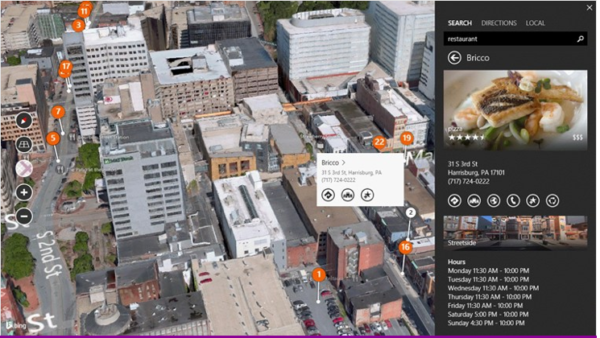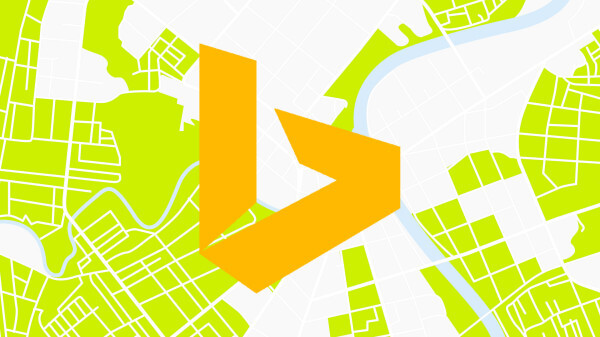Yesterday Microsoft announced “Bing Maps Preview” for Windows 8.1 (including tablets). The new mapping app offers a range of enhanced features and capabilities. It seeks to bring highly realistic, 3-D imagery together with a more intuitive UI. Google Earth and what used to be called Microsoft Virtual Earth have always been a bit slow and […]
Google Earth and what used to be called Microsoft Virtual Earth have always been a bit slow and clunky as daily mapping and local search tools. Now with Bing Maps Preview Microsoft is trying to merge the daily, mundane world of local search with the more imaginative and leisure uses of 3D mapping (virtual sightseeing, travel planning).
Microsoft said it built the new maps experience, “from the ground up” and has brought together a range of disciplines and experts to add new richness and utility to maps:
We have assembled world builders from the video game industry, expert photogrammetrists, high definition aerial cameras and a massive data pipeline crunching petabytes of imagery to deliver a more natural way to experience our planet. With advances in Windows, in computing hardware and our ability to capture, process and render imagery, our automated pipeline is capable of pushing pixels from a plane to the app in a matter of weeks and has already processed over 121 trillion pixels to date in order to build our 3D environment.
 Among the new or expanded features of Bing Maps Preview for Windows are the following:
Among the new or expanded features of Bing Maps Preview for Windows are the following:
- High-resolution, interactive 3-D cities
- Touch gestures to change the viewpoint or orientation of the map.
- More Streetside imagery with 360 degree panoramas
- Persistent search box
- Personalized local recommendations when signed in with Facebook
- More information about landmarks, local sights and attractions by tapping on the place of interest
- Ability to save favorites and customize the map
This experience isn’t yet available for non-Microsoft platforms or mobile devices beyond Microsoft Surface tablets. However I suspect we’ll see it roll out more broadly across platforms and in the browser over time.




